We ate well in Hong Kong and Macau. Not counting egg tarts, most meals fell into three categories. Each had one restaurant that was so good that we visited twice. Here is a summary.
Cha Chan Tang
Hong Kong is a global city with as many options as can be found anywhere else, but Phil and I chose to eat more than half of our meals at these HK style cafes. Evolved from eateries mimicking the cuisine of their colonial overlords so the local commoners could have a taste, these cafes are known for serving milk teas, sandwiches, and pastas alongside classic Cantonese fares like congee and fried noodles.
While technically all falling under the same umbrella, these cafes ranged from a stand in the alleyway to an elegant restaurant with white tablecloths. The challenge always had to do with deciding where in the range of cuisine fusion we felt like on the particular day. Instant noodles with chicken wings or peanut butter toast?
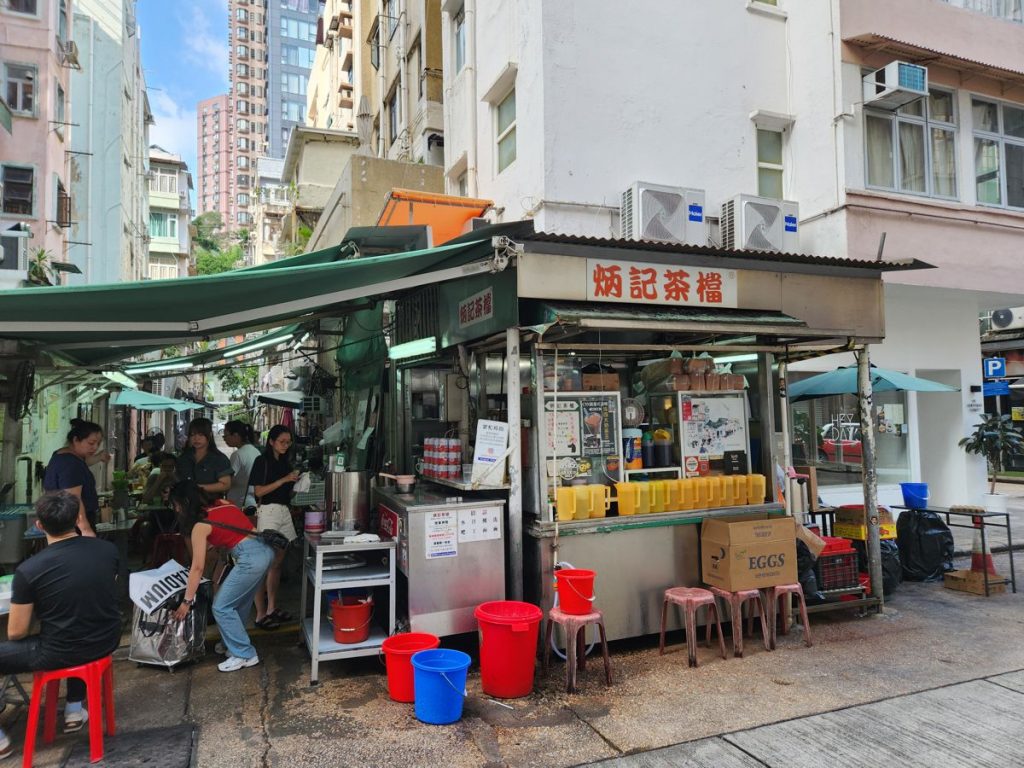
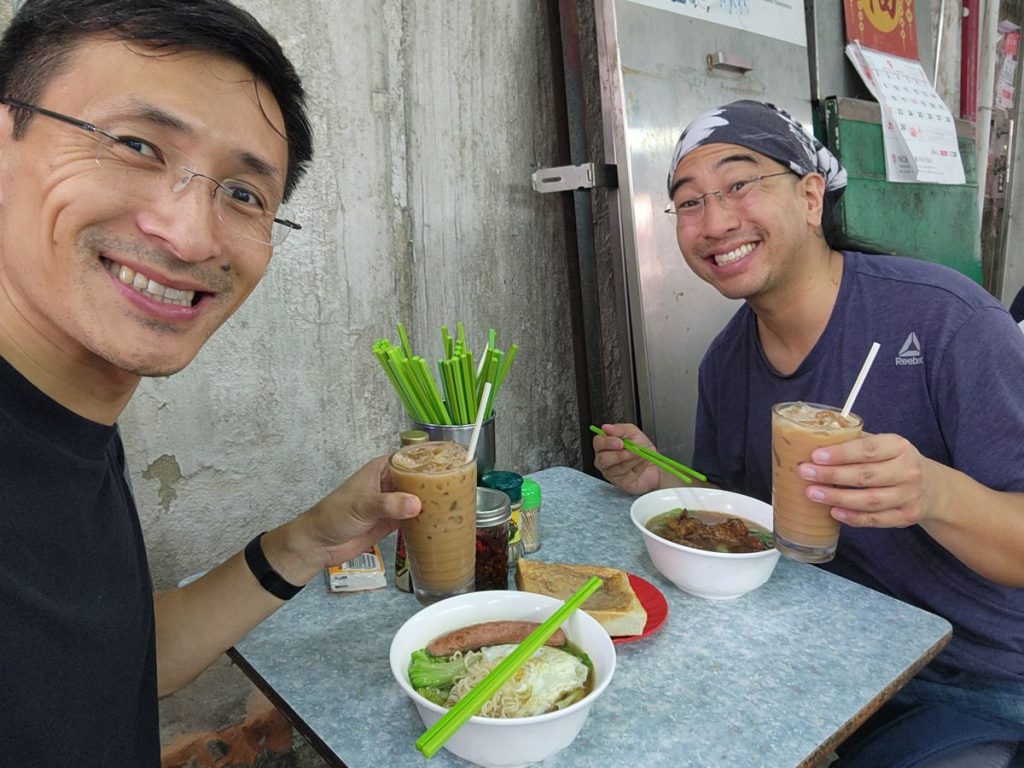
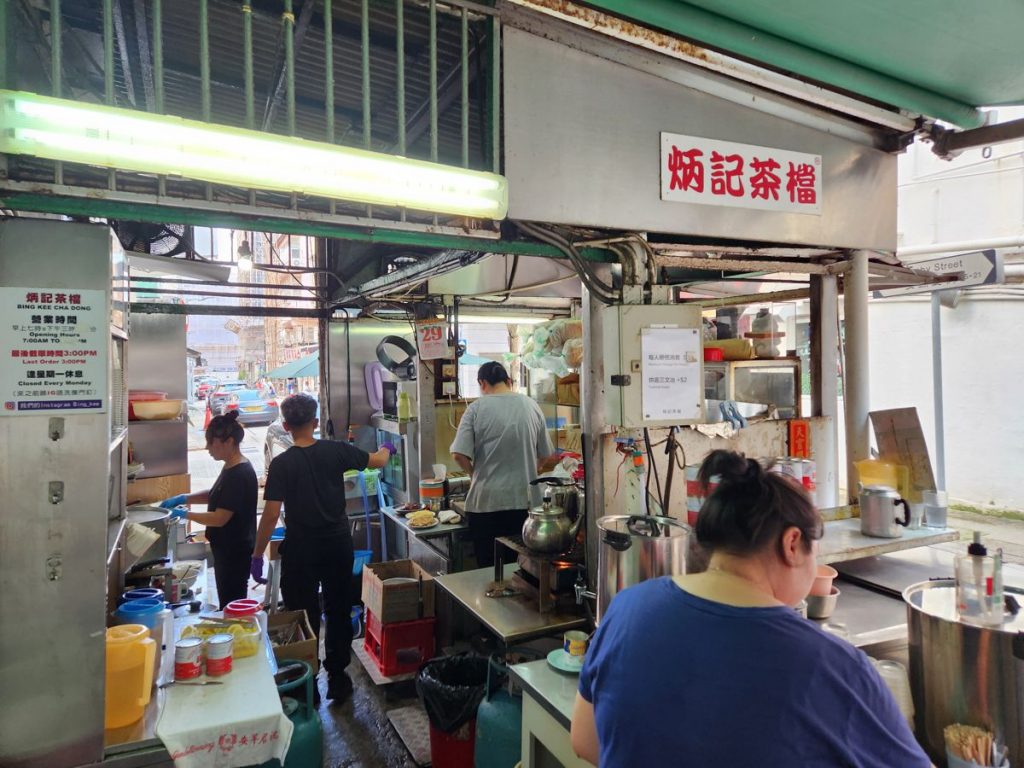
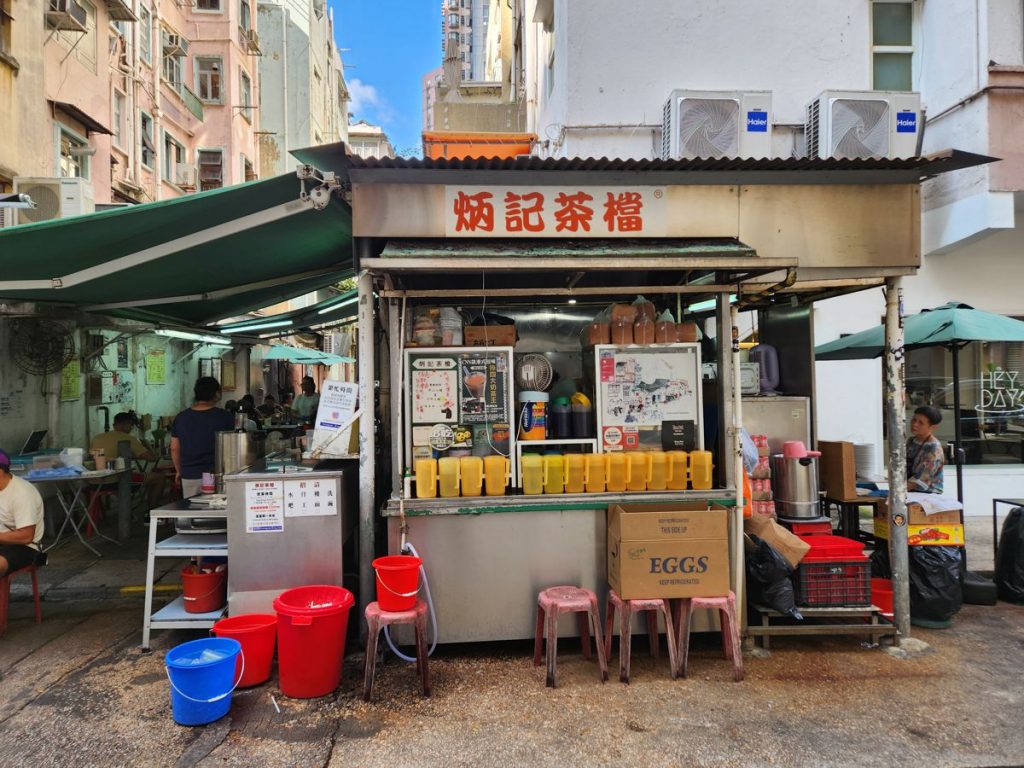
I felt somewhat embarrassed dragging us to Lan Fong Yuen, the café known for having invented the HK style milk tea, because it was one of those tourist destinations that I usually avoid. I remembered too fondly of their Yuan Yang Gui Lao Fan, though, which I bought that one time in 2014 and ate on the hotel room floor. When it came to the taste of Hong Kong, I really had to give it another shot… and wow it did not disappoint. I had had numerous dishes by the same name in the past 10 years and nothing came close to their red (meat) and white (seafood) sauces. We went back again before the end of the trip.
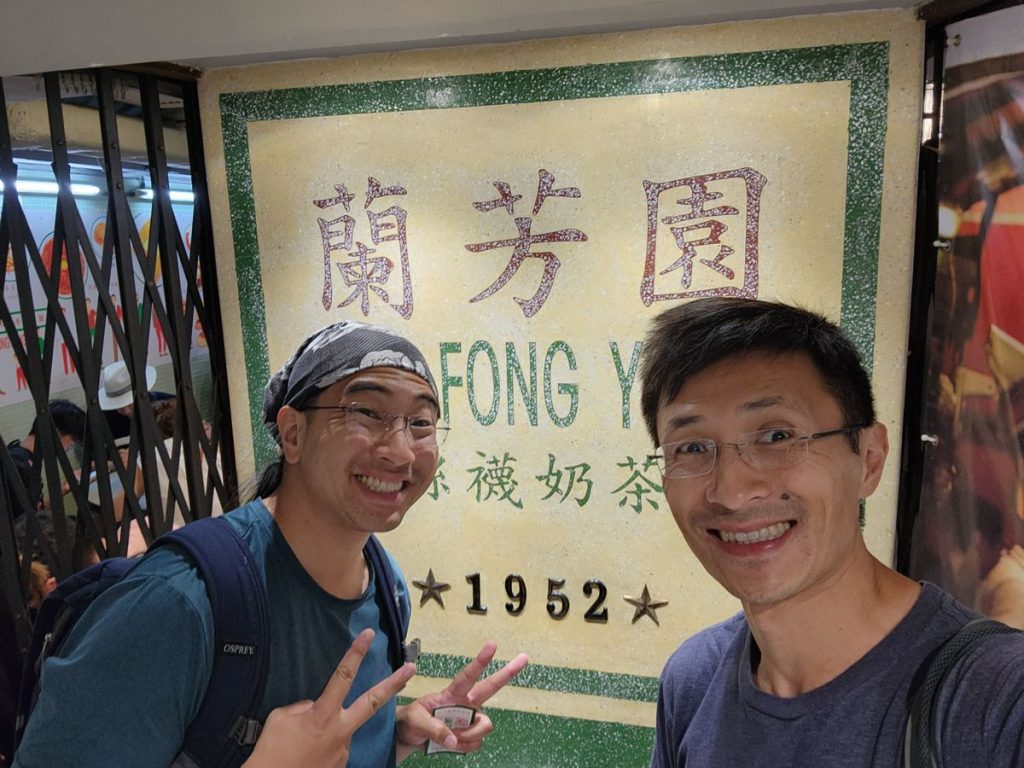
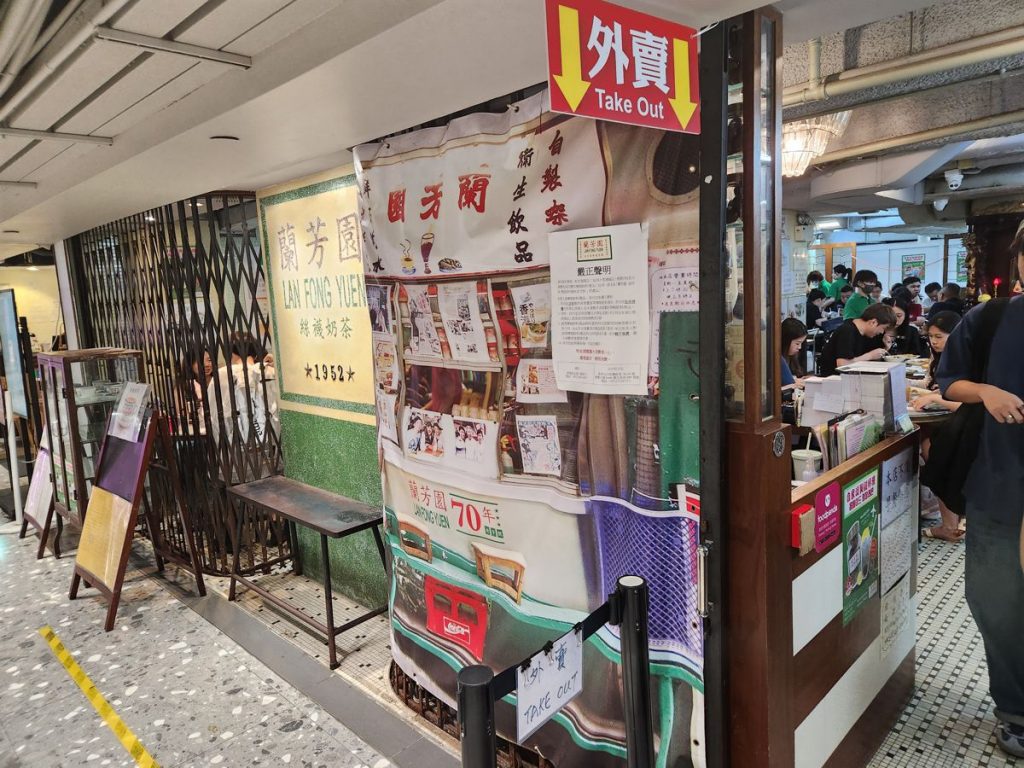
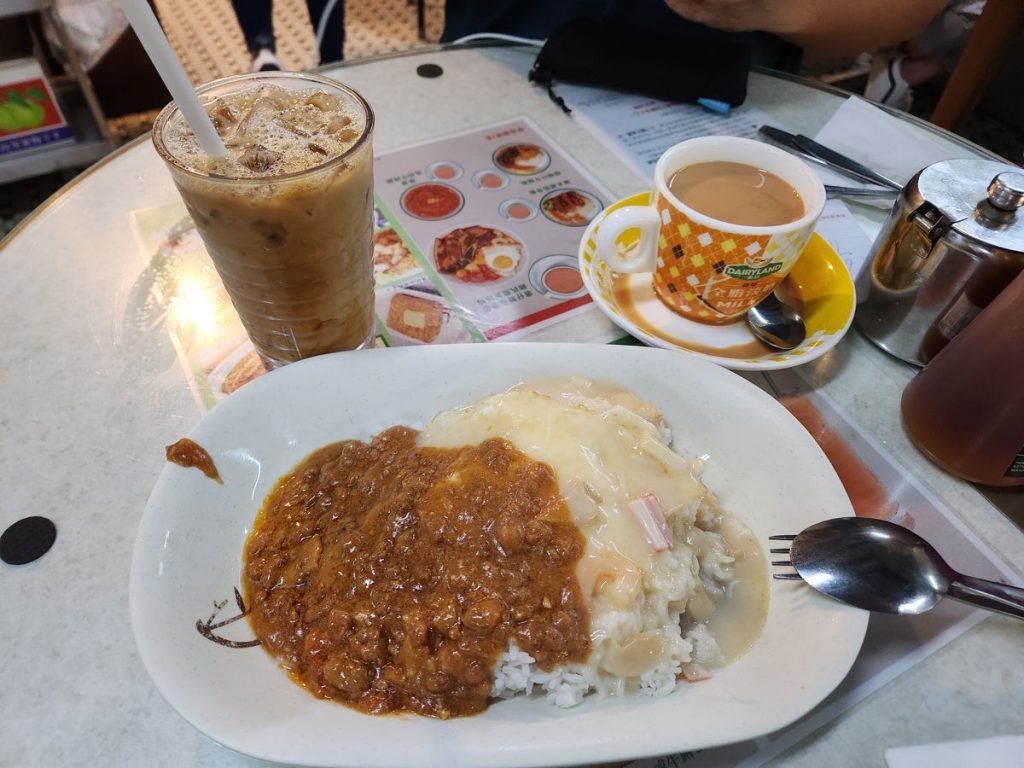
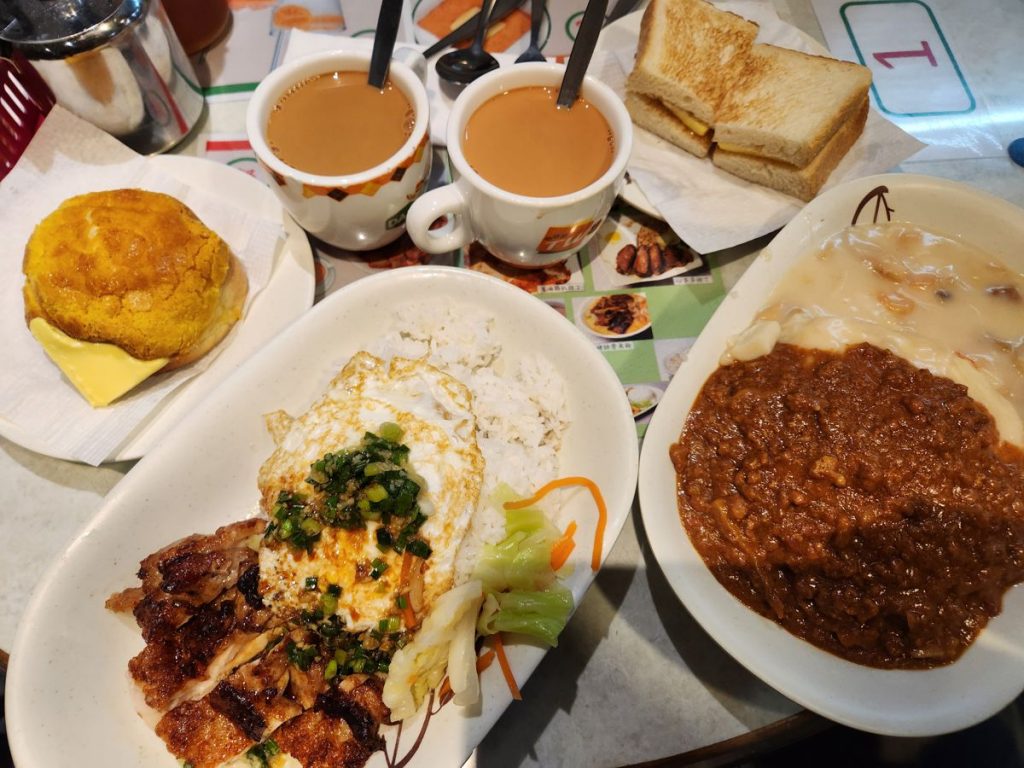
Goose
I have been telling people all my life that duck is better than chicken, and goose is better than duck. However, for some reason, goose really isn’t a popular poultry. My own assertion was based merely on a couple data points from my childhood, because I had never encountered it again. But Hong Kong is famous for goose… in fact, there seemed to be a goose restaurant every few street blocks.
The best known version is the roast goose, done in the Cantonese bbq style similar to the ultra-popular roast duck. We tried it at Yat Lok, a Michelin-starred roast goose restaurant. While they had a few cuts available, they were pretty much telling all customers that the drumstick was the best. Phil and I each got one, over rice and over noodles. It was fine… but if it was our first time eating this bird in HK, neither of us would have cared to give it another try. The greasy legs were hardly above room temperature when served and did not have a significantly different flavor from roast duck. On top of that, the busy restaurant put us in a wall-facing corner and rushed our meal. At the end of that dinner, Phil and I both wanted to go back to Yum Yum.
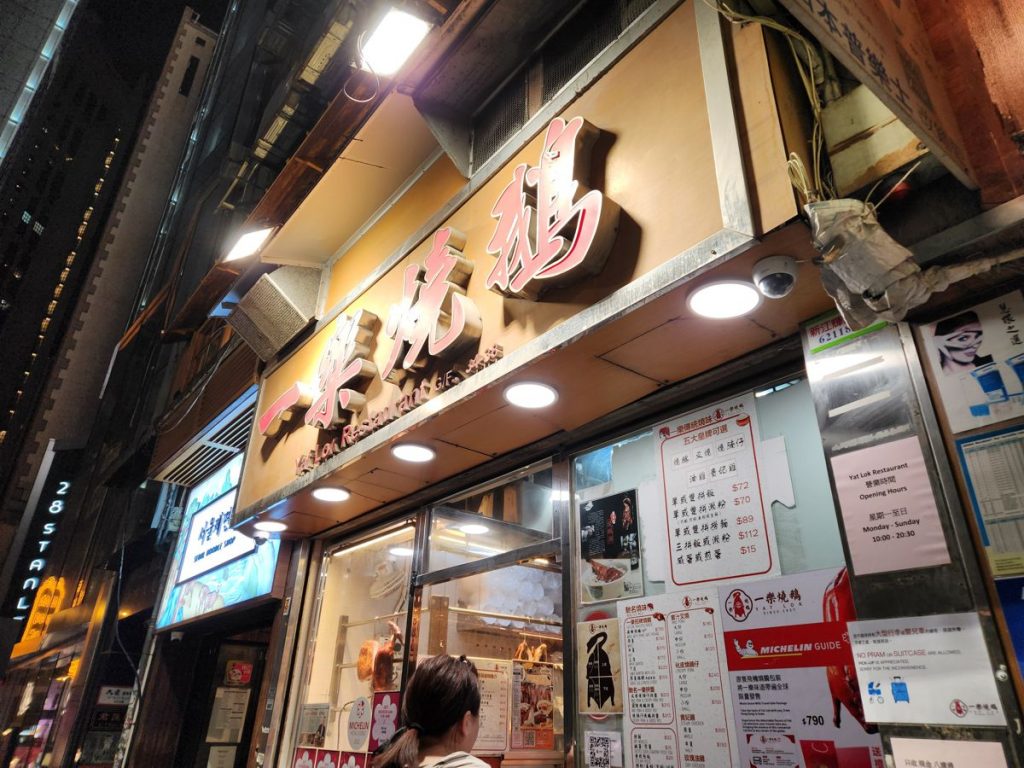

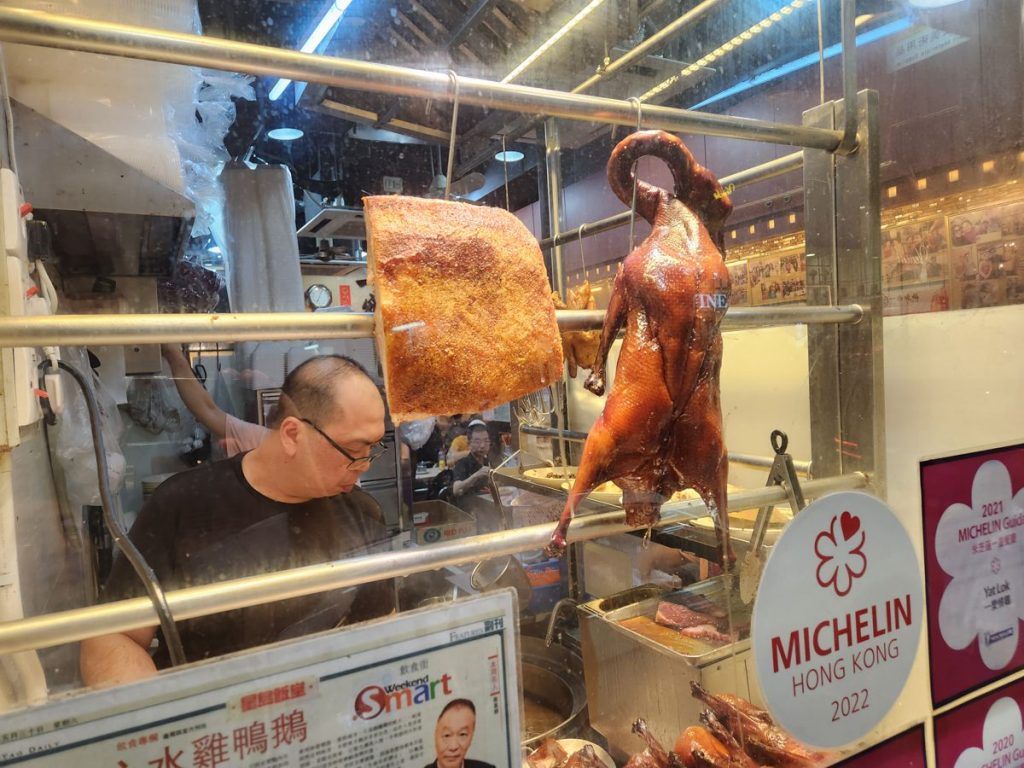

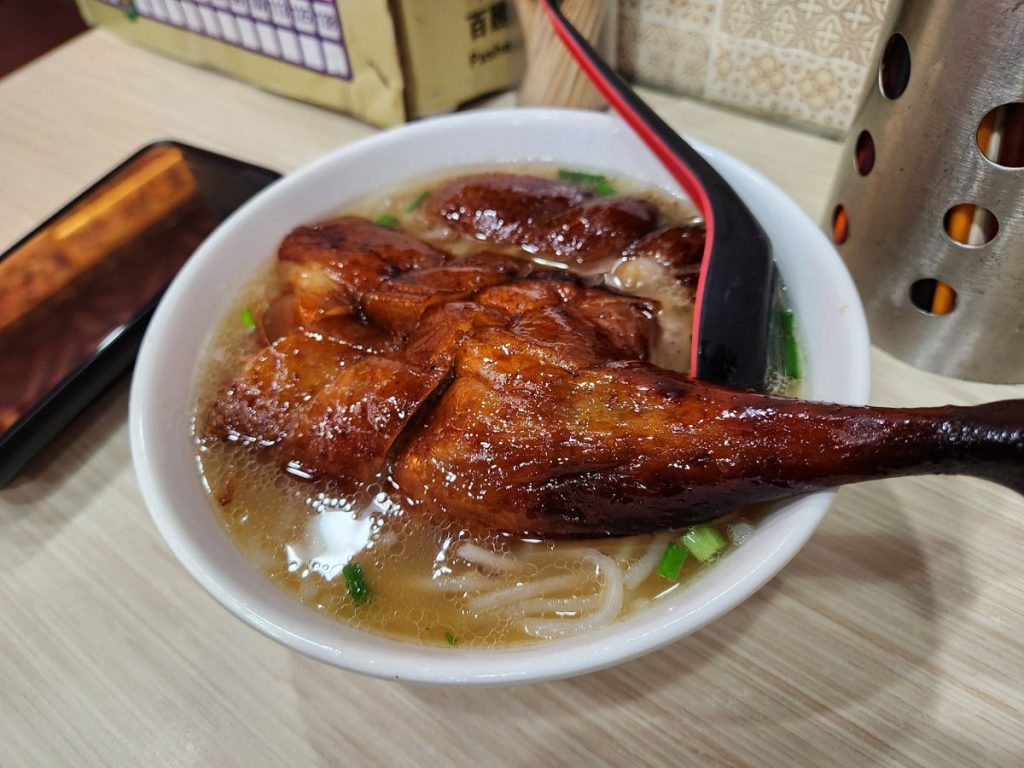
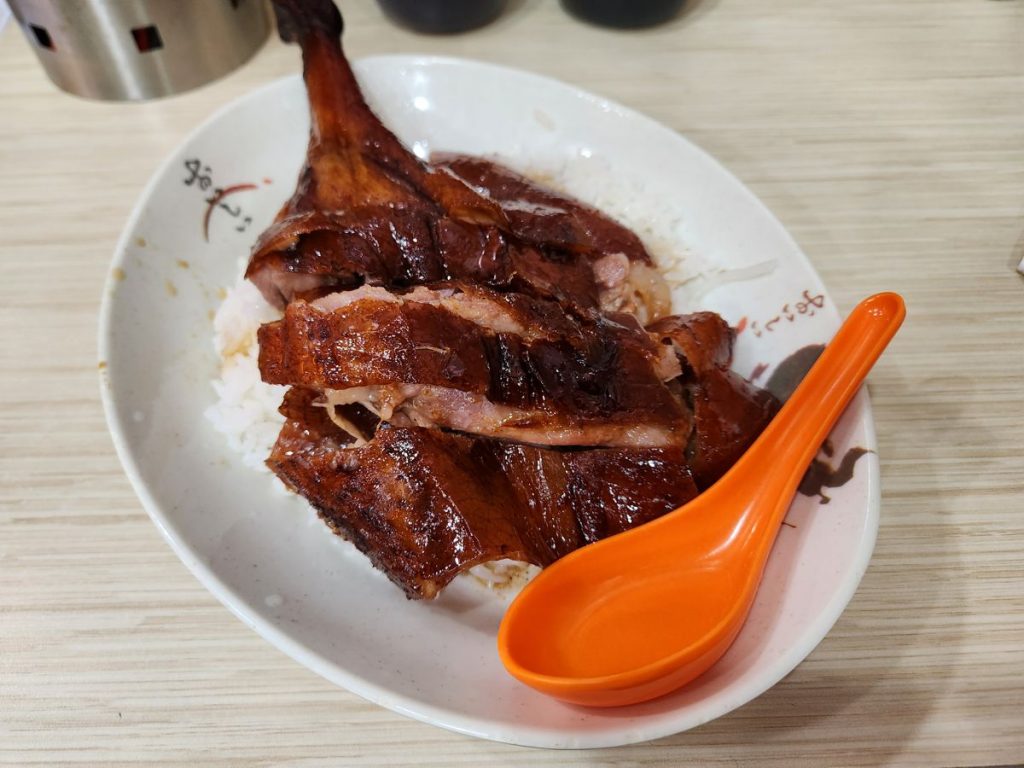
A few blocks away in Central, in a neighborhood full of lunch options for the office workers, Yum Yum served goose in the “lu shui” style. The bird was braised in a relatively light stock, so the meat’s own flavor really shined. This restaurant also focused on the different parts of the animal – neck, palm, kidney, liver, intestine, and more. I was naturally excited by the menu, and Phil thought all the innards were more delicious than the meat itself. We spent so much time deciding which combo meals and which a la carte items to order, in order to try everything without an overwhelming amount of food. The egg was just okay because it was mostly yolk. On the other hand, the blood was so tasty that it might have been our favorite thing.
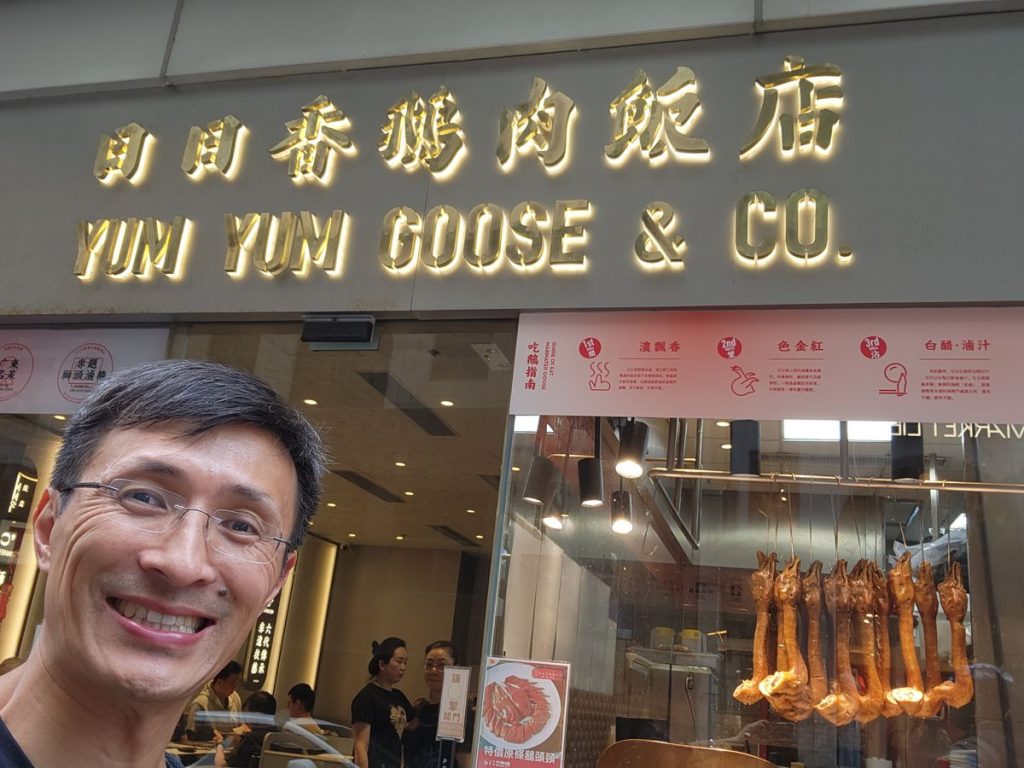
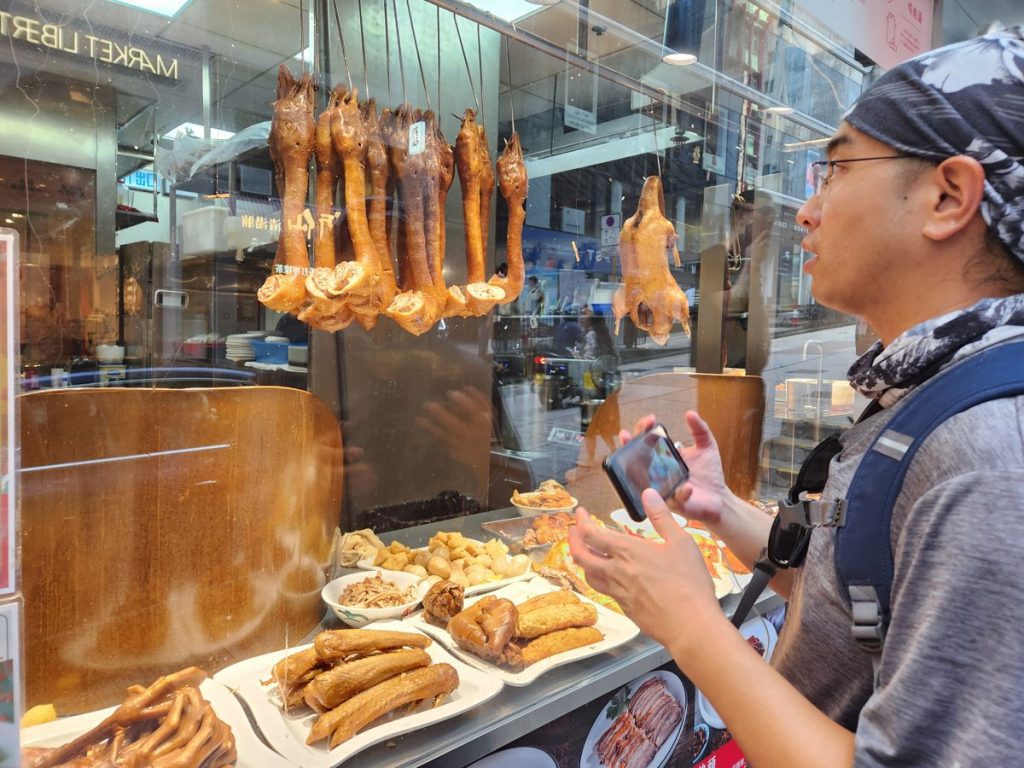
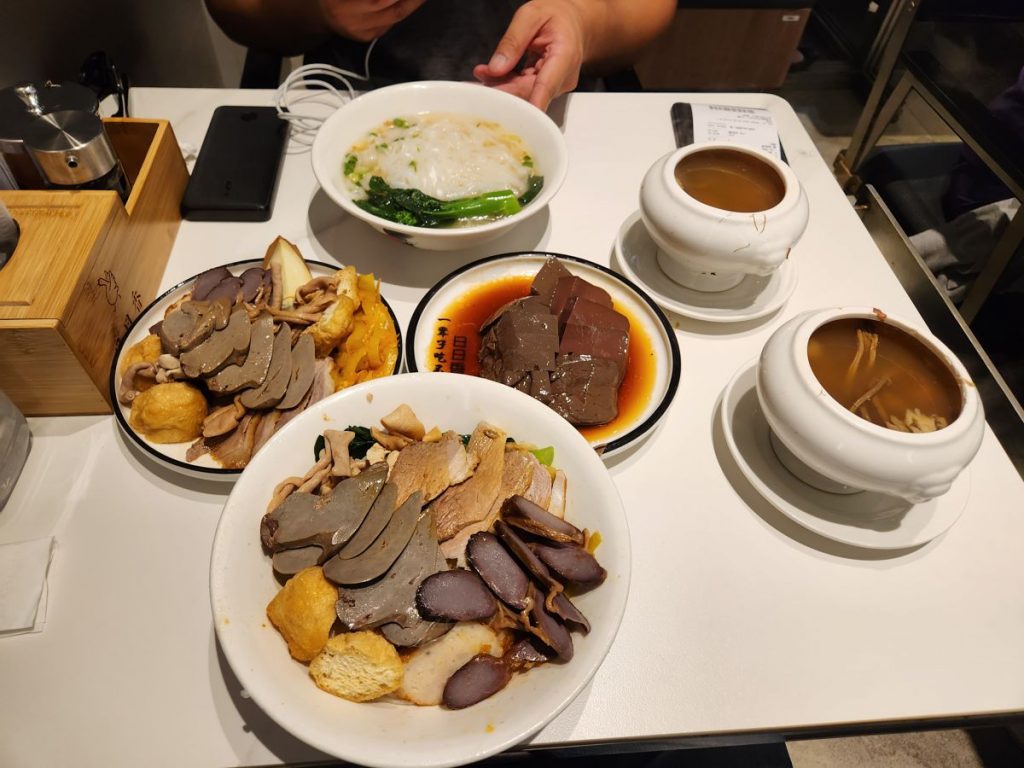
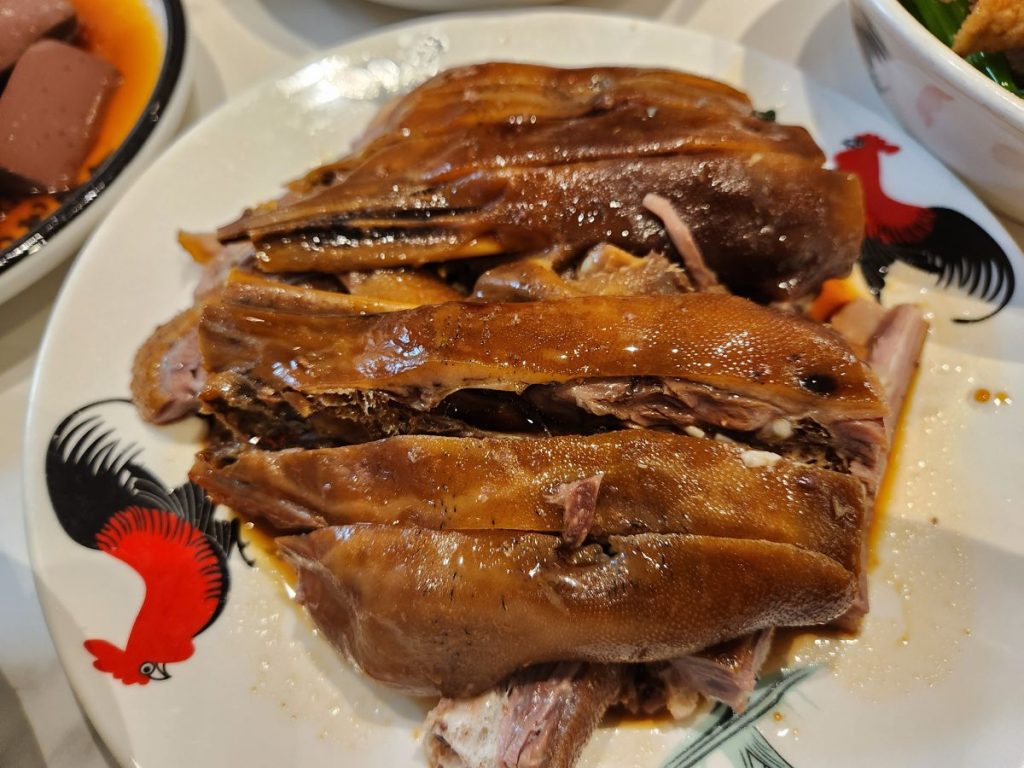

Mainland Chinese Food
The area around our hotel in Macau was more Chinese than Macanese. Restaurants, stores, and the style of neon signs all made it seemed like we could be in a random city in Mainland China. Out of convenience, we ate our meals at these places.
Our first meal in Macau was Lanzhou la mian (pulled noodles) and it was by far the worst meal of the trip. Its only redeeming value was making us laugh. To be fair, I do love this kind of noodles and often go out of my way to eat it, and it seemed like a good idea when the store lady hustled us to give it a try. But it turned out to be a huge scam. Compare the picture on the menu (standard look for this dish) to the photo of the real thing: no turnip, no chili oil, hardly any cilantro or scallion, and the advertised “large slices of beef” were the size of a penny. I don’t care much about beef in my beef noodle soup, and would’ve been happy with this if we were eating it in some poor village. But if I paid Manhattan Chinatown prices in Asia, I expect at least Manhattan Chinatown quality. The false advertising here was obviously the kind of trick that the worst tourist traps pull on never-to-return-again customers.
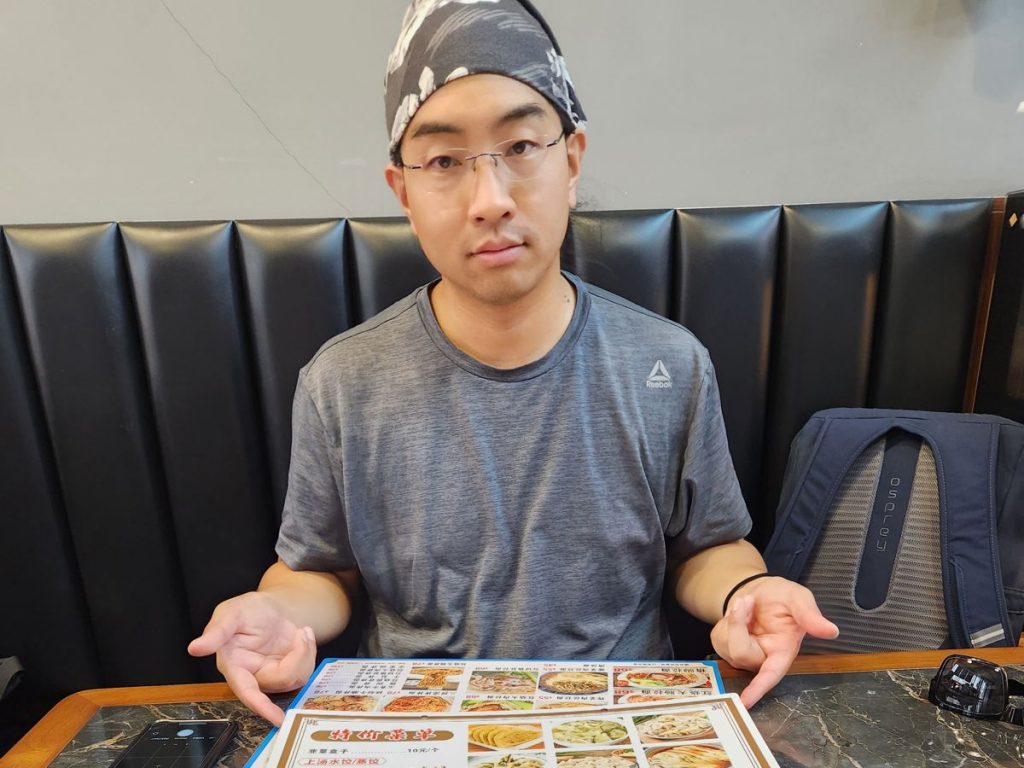
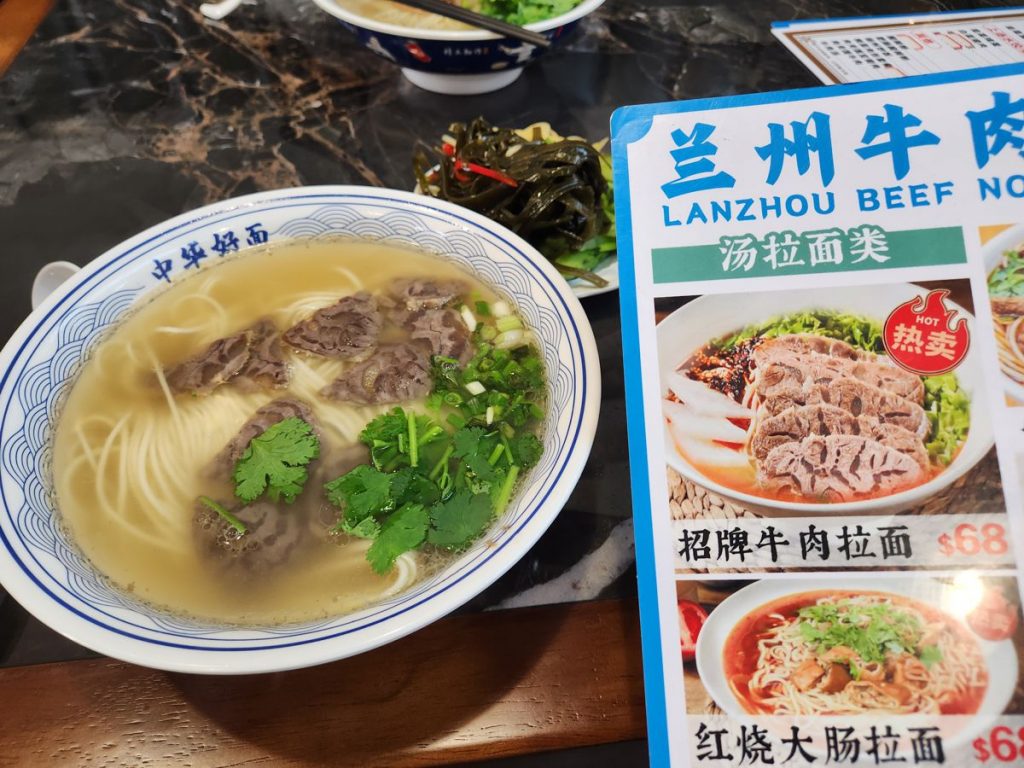

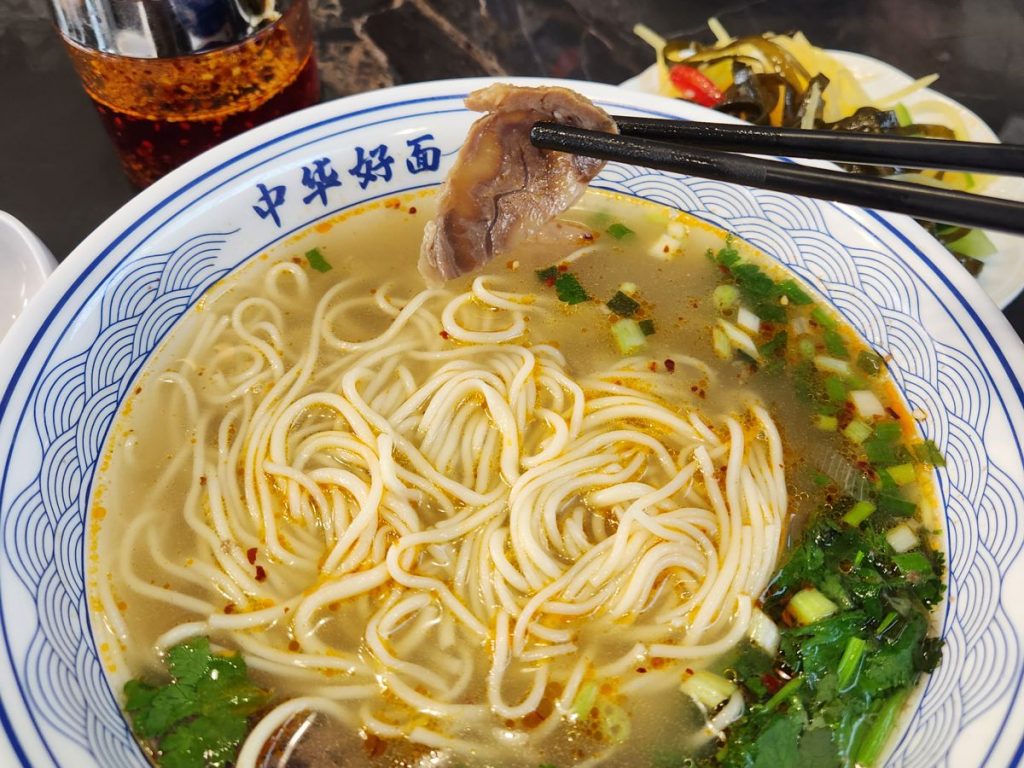
Our next meal, though, was the opposite of a tourist trap. A row of Mainland Chinese restaurants lined the street, with their authenticity evidenced from the complete lack of English or Portuguese signage. The smallest among them was a Hubei eatery with 3 tables and 12 stools, serving the classic “four dishes and one soup” cafeteria style seen from Taipei to NYC Chinatown. Twenty-one pre-cooked dishes were on display in the window. For a fixed price of MOP 50 (a bit over $6 USD, on par with a latte), you get 4 dishes of your choice plus all-you-care-to-eat white rice and soup.
Phil was particularly drawn to the ambience (anti-ambience, perhaps?) here and convinced me to skip the proper sit-down restaurants next door. I was skeptical at first because it was jam packed, but the owner reassured me that there was seating for us. He stepped inside and looked around at his 12 customers. “Hey, you’re done eating right? Get out.” He told one of them in a matter-of-fact voice, and without a fuss there was an open space. Someone else finished at the same time and left, so Phil and I each got situated at a different table. It sounds rude, and is unimaginable in most restaurants, but the interactions here felt natural. Over the course of the meal and the next evening when we returned, the staff actively turned seats over and move some customers to accommodate others. No party got seated together, though most patrons came alone. Everyone seemed to be of the understanding that this was a small business with thin margins, and played their part harmoniously.
Before sitting down, we had each picked our four dishes and paid. All “four dishes and one soup” meals I had ever had were served in compartmentalized trays or food boxes. Not here. The lady simply dumped everything with distinct flavors into the same plastic Tupperware. When it got put at our seat, the rice and soup also landed on the table in the second and third plastic containers. This was about as primitive as a modern restaurant could go. You would expect zero service, but then you’d be wrong. The staff didn’t ask if we enjoyed their food with a smile on the face, but for anyone wanting a refill of rice or soup, just ask and they’d immediately deliver. Dinner there felt like being fed by an aunt at her kitchen. Even though they kicked out people who were already finished, they didn’t rush anyone still eating or deny any refill requests. There was occasional chatter between the customers and the staff, and the entire place was down to earth.
The same also applied to the food, which was homemade. In contrast to fancy restaurant meals, this was comforting to eat and definitely way more difficult to find in a commercial setting. We both loved this place.

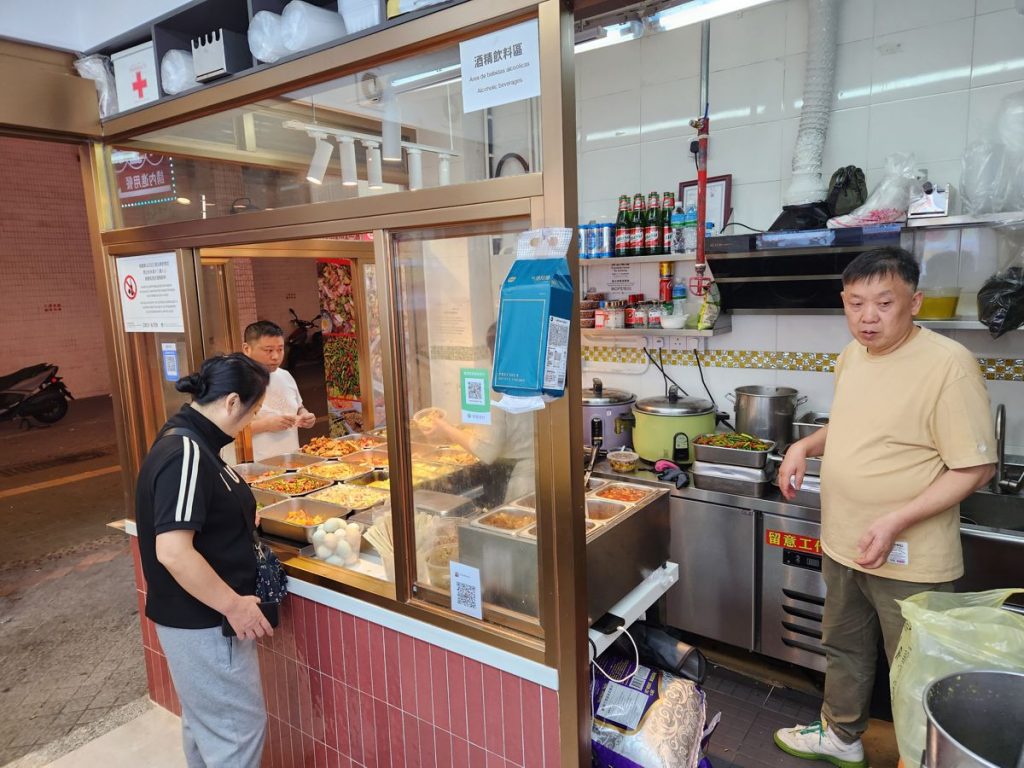
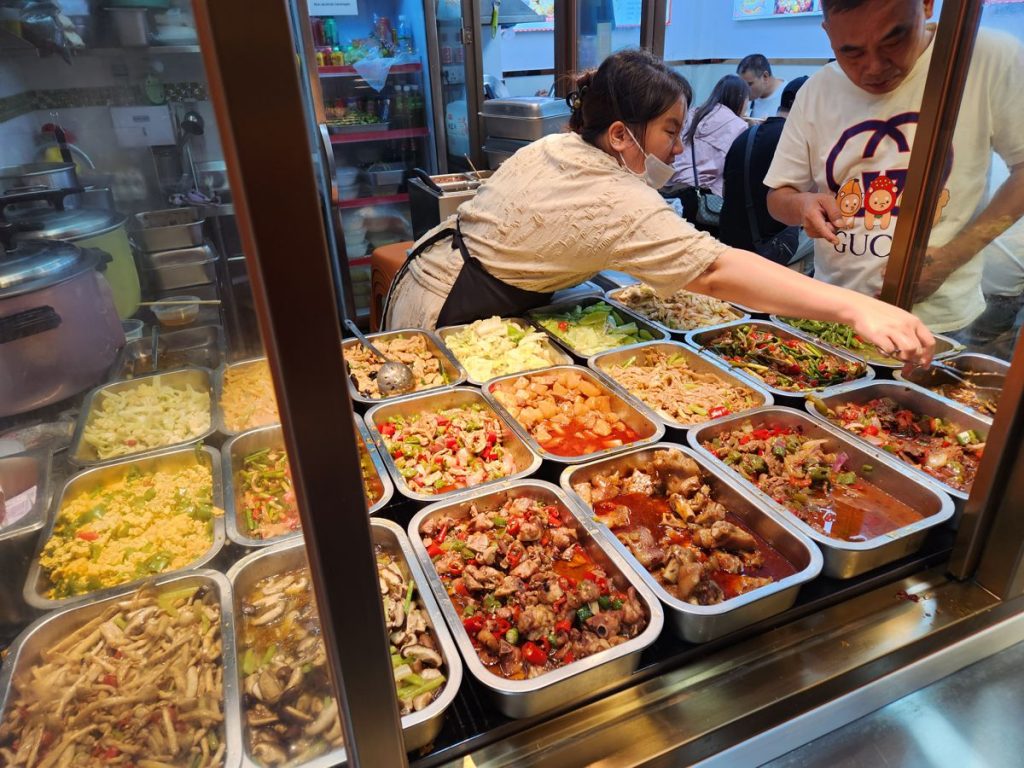
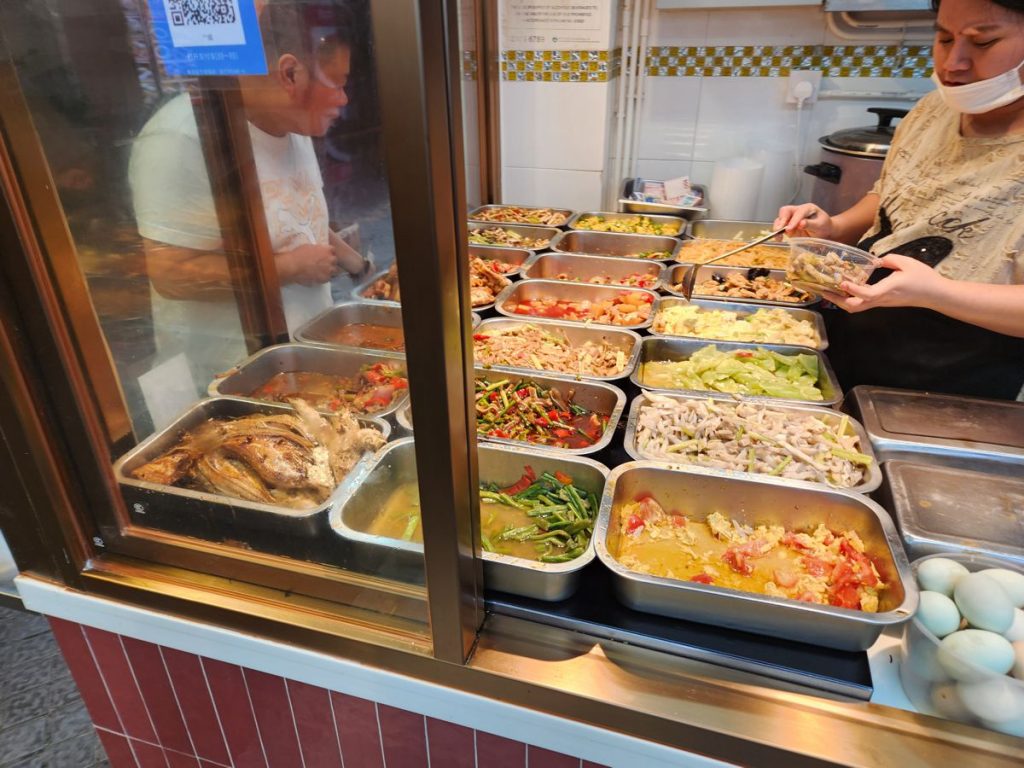
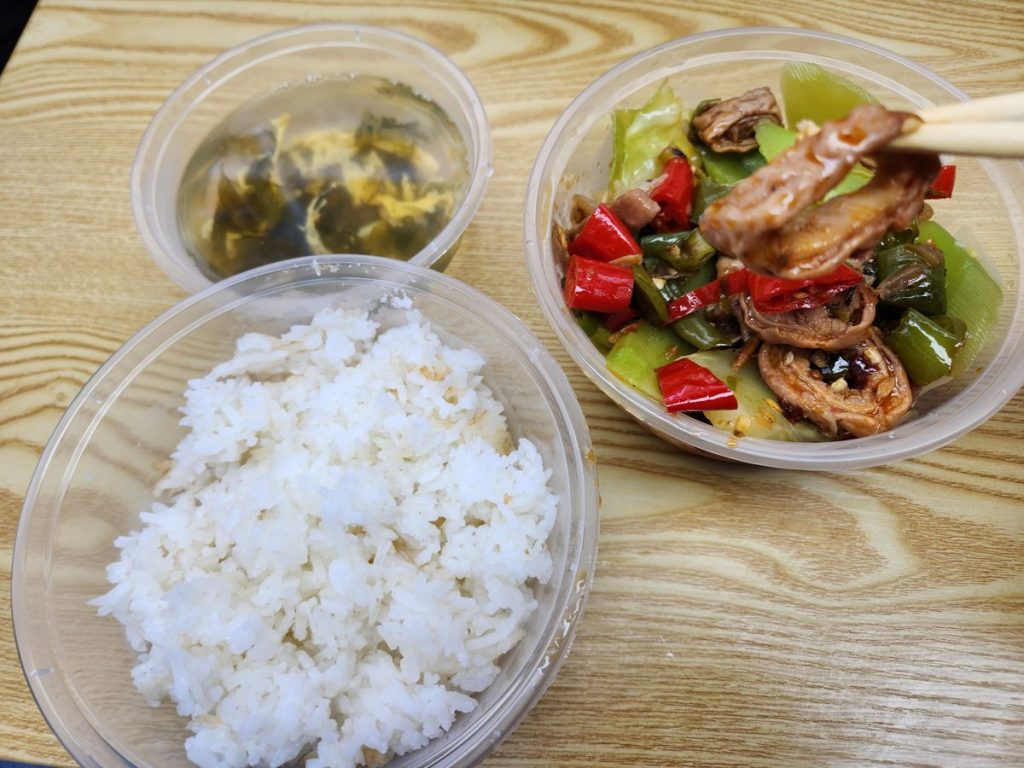
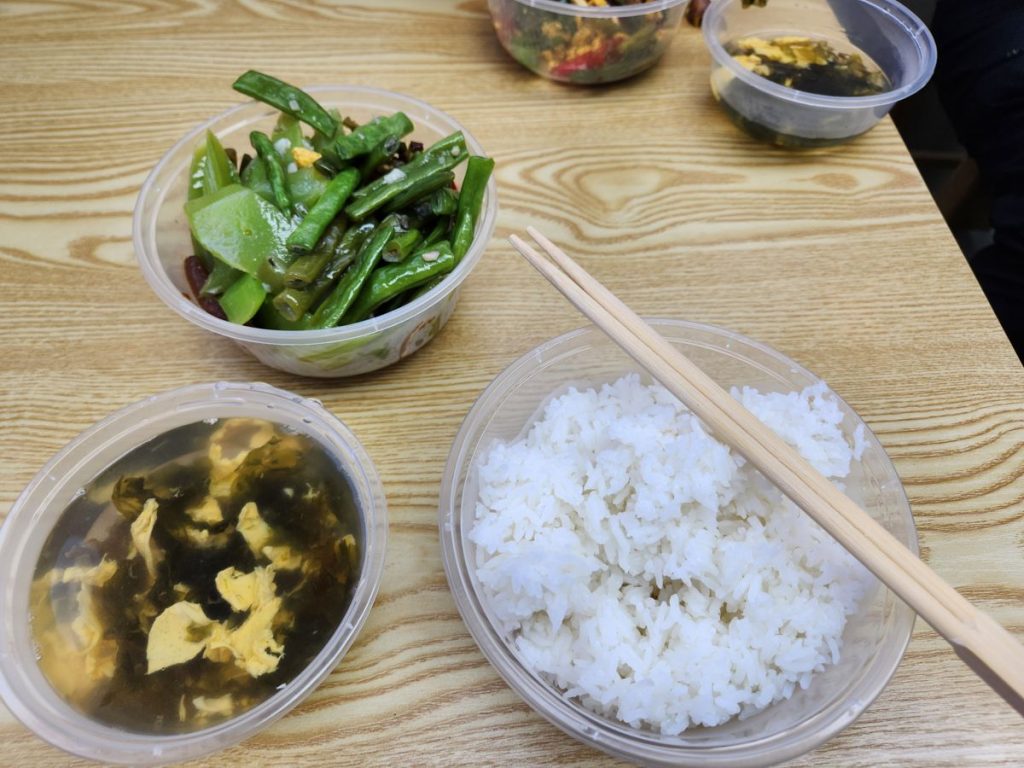

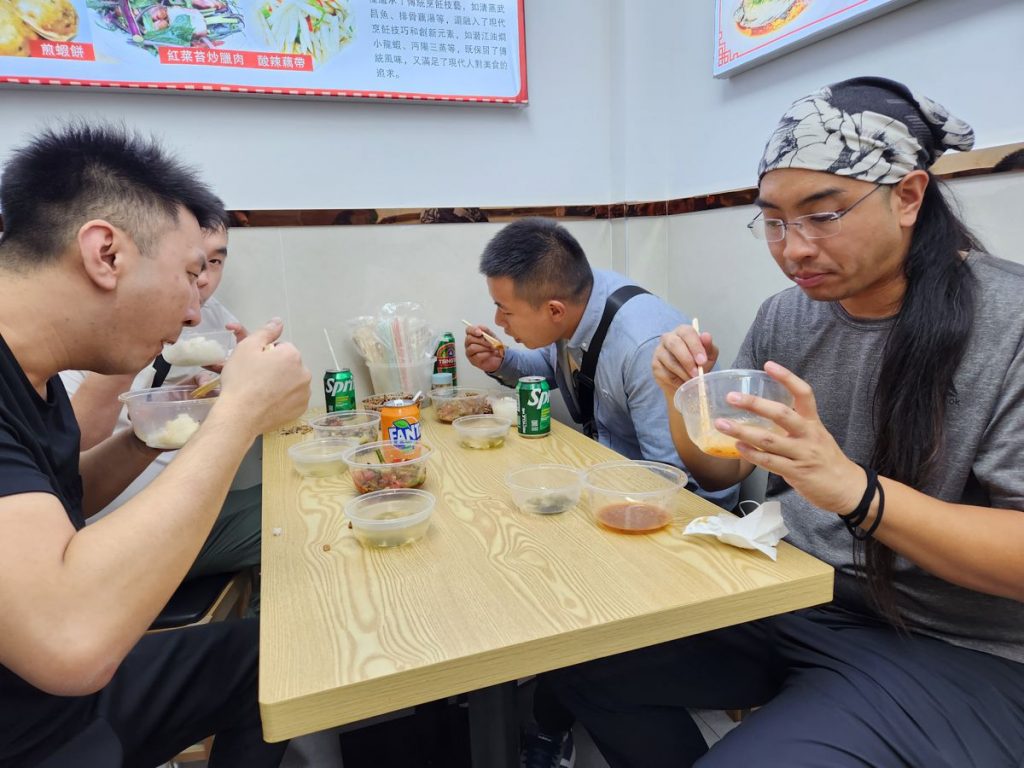
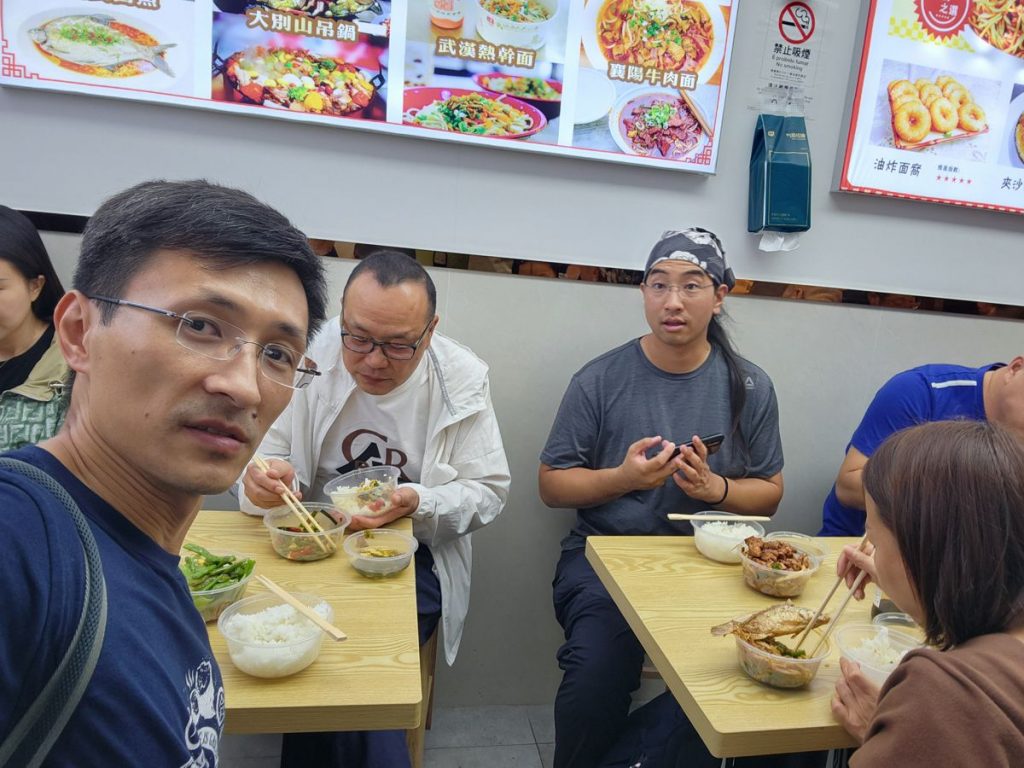
Honorable Mention: Portuguese Food
Since we were in Macau, we felt obligated to try some Portuguese food. I had never tried this cuisine before so could not gauge its authenticity, and wouldn’t bet on it given its location (Taipa village, one of the most crowded tourist spots) and decor. The food was delicious though, and fairly different from anything we’ve had before. From left to right in the photo below:
- Stir-fried bacalhau with potato – bacalhau is the Portuguese salted cod, and seemed to be a primary ingredient as it was featured in many of the menu items; this dish was extremely flavorful and thus a delight to taste, but it was also quite salty and difficult to eat about half way through the meal
- Fried ox tongue – thick cut, juicy, and tender; light on flavor relative to how Chinese and Mexican versions of tongue
- Portuguese seafood rice – similar to the Spanish paella, just on the drier side and contained bacalhau; very comfortable to eat
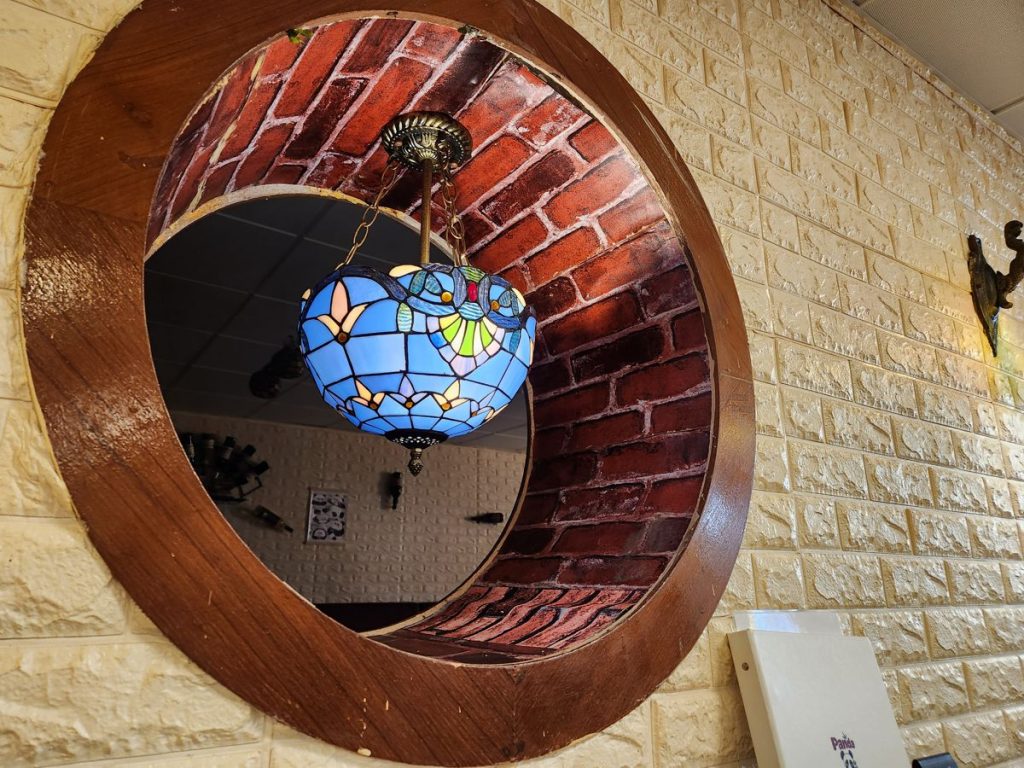
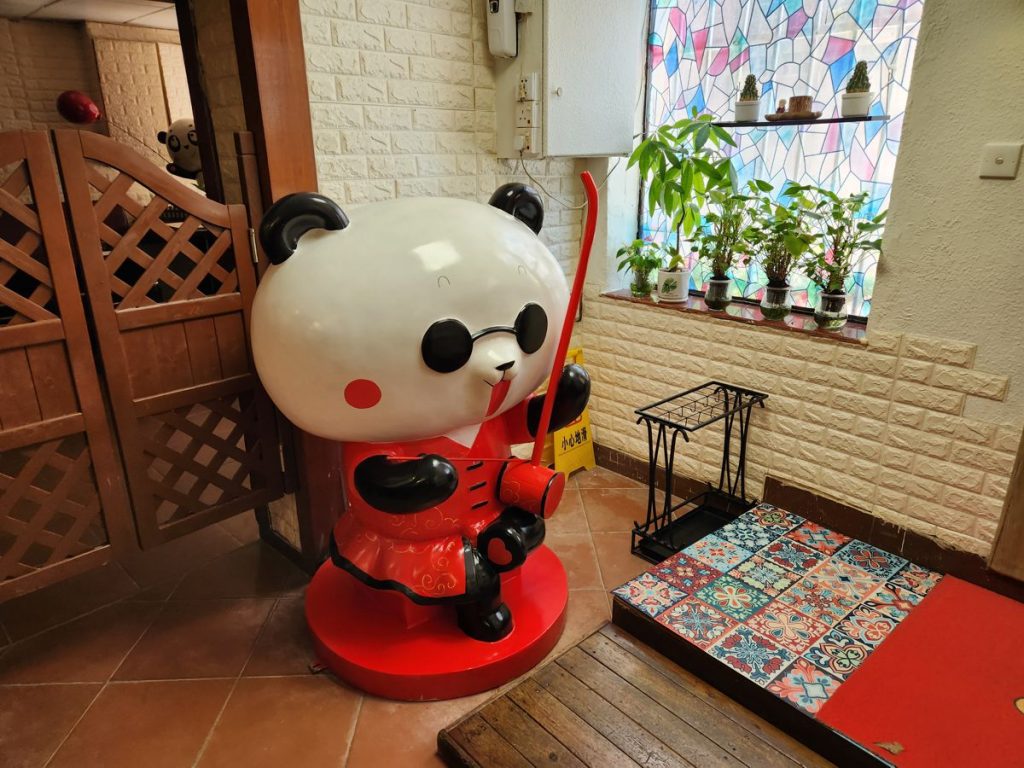
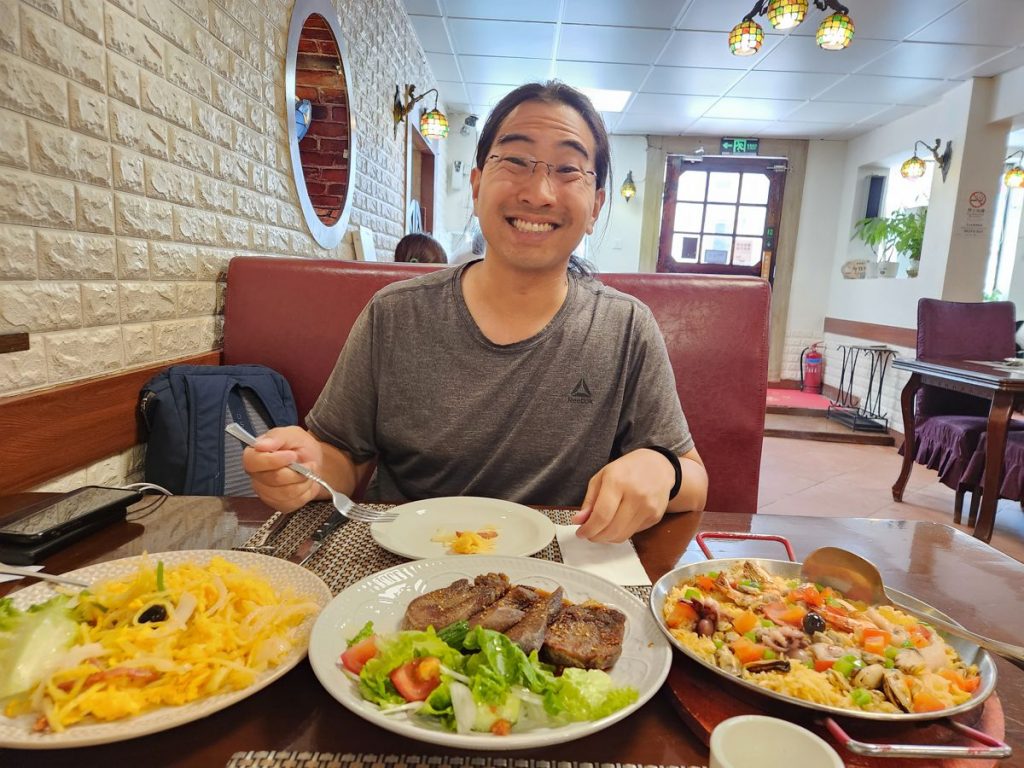
HK & Macau 2024 Index
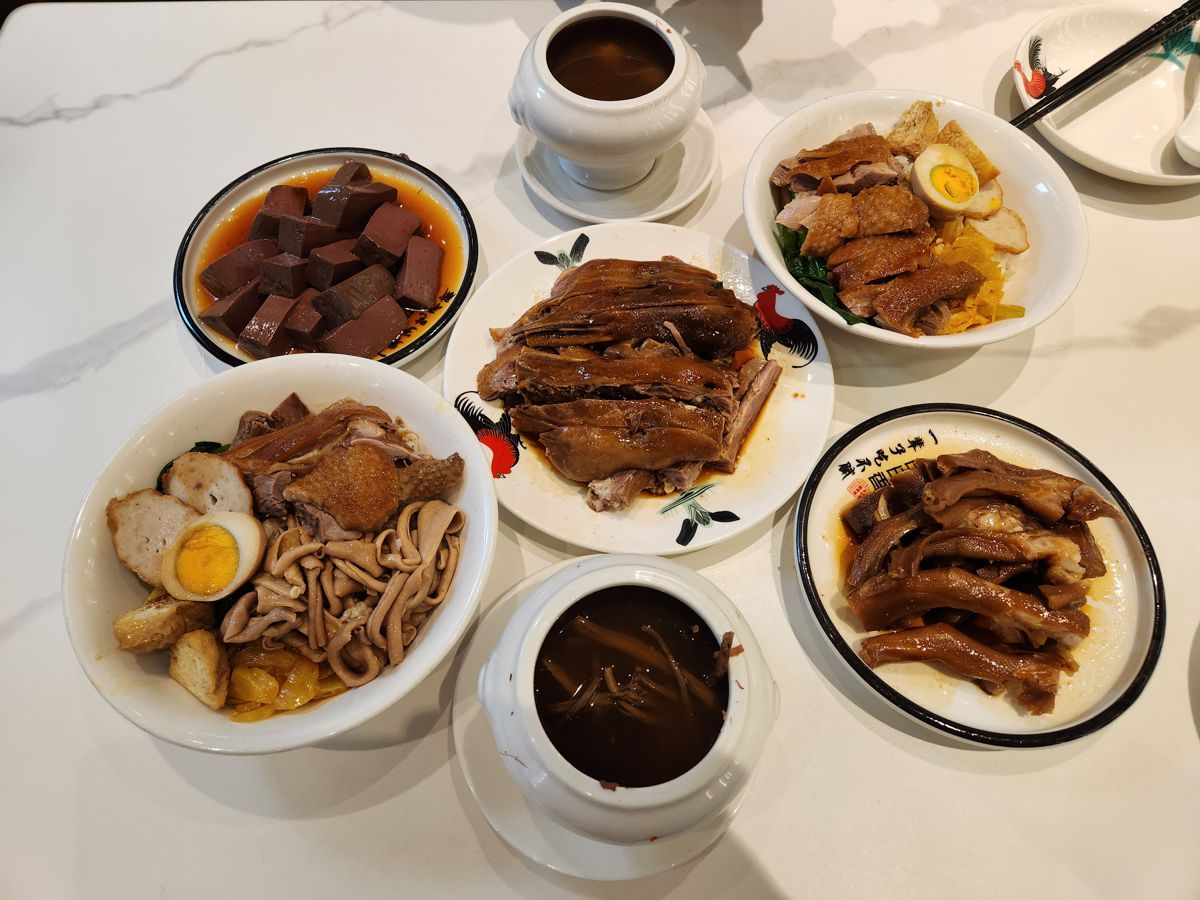
HK & Macau 2024 (9/9) – Play – Peter's Blog
November 6, 2024 at 1:10 am[…] Eat […]